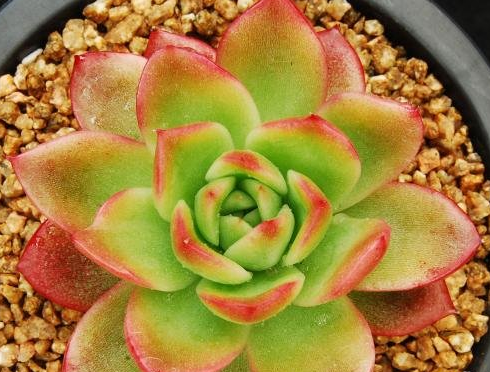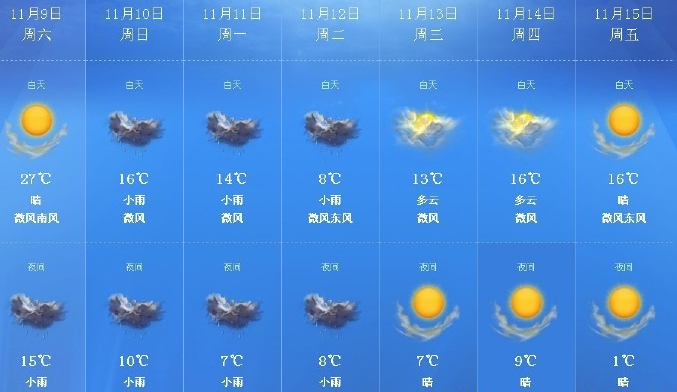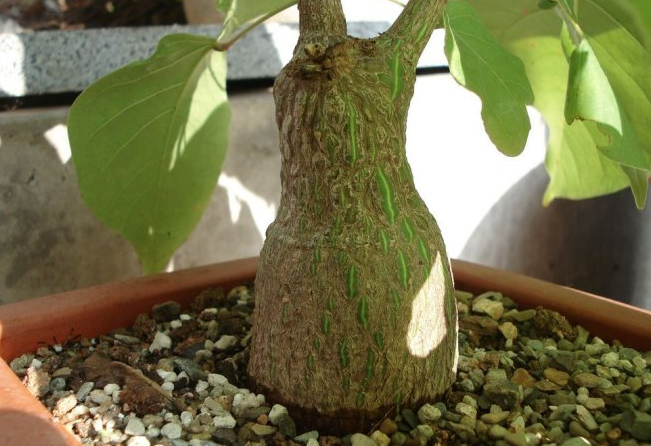How to maintain the "Purple Mirror" of bulb tuber plant
Massonia pustulata (Hyacinthaceae) Massonia is a perennial bulbous succulent plant of Hyacinthaceae (Hyacinthaceae). The plant has a round bulb, the bulb is composed of layers of thick fleshy scales, and the epidermis of the underground part is rice-white. The leaf is drawn from the top of the bulb, heart-shaped, with leaf tip, leaf thin, leaf surface with protruding flesh thorn, leaf color green with purple, leaf will be more purple in the sun, scattered light leaf is green, purple is not very obvious, purple mirror is generally two leaves born with each other. The purple mirror does not have tall flower branches, the clusters of flowers extracted from the leaves, the flowers are light white and slightly purple, the flowers generally open when there is plenty of sunshine, a single flower can bloom for about 5 days, the florescence is about December, and the florescence is about half a month before and after the flowering period. but the bud gestation takes about 2 months, and self-pollination takes about 2 months. The seeds are basically matured around March next year, and the seeds are black, the same size as rapeseed.

Purple mirror like cool, moist and sunny environment, afraid of hot and humid, resistant to semi-overcast, but also resistant to drought, there is a certain degree of cold resistance. It has the habit of dormant at high temperature in summer and growing in the cool season from autumn to spring.
Purple mirror likes cool and afraid of heat, and the main growth period is from September to April of the following year. It is advisable to maintain a temperature of 0 ℃ to 15 ℃ in winter. In this environment, plants can continue to grow and normal fertilizer and water management can be carried out. No less than 0 ℃ can safely survive the winter indoors. In the middle and last ten days of May, with the increase of temperature, the leaves on the ground gradually withered, the plant went into a dormant state, the dry leaves could be removed, the bulbs were left in the original pot for summer, and the flowerpot should be placed in a dry, ventilated and water-free place until the end of August and the beginning of September. As the weather turns cool, new leaves will grow out of the bulbs, and normal management can be slowly restored. It is worth reminding that summer dormancy, plants do not have no water throughout the summer, can stay slightly moist, although the leaves have dried up. The underground bulbs will still grow, do not water in the center of the dry leaves, because the leaves dried up after the soil will leave a hole, generally Xiaobian is careful to give on the edge of the basin, or soak the basin for a second, over a summer, the bulbs grow a lot bigger.
Purple mirror likes light, and sufficient light should be given during the growing period. when the adult purple mirror wakes up from dormancy, the leaf and the bud grow at the same time, and the leaf grows faster than the bud. During the growing period, it is appropriate to keep the soil moist without stagnant water. If there is a long-term drought and lack of water, the plant will not die, but the growth will stagnate, the leaves will yellowing, and even withered and dormant again; while the long-term stagnant water in the basin soil will cause bulb rot. In summer, in order to avoid flooding in the rainy season, the flowerpot can be placed on the shelf or on a stage with a certain height, and pay attention to control watering to prevent the bulb from rotting due to stagnant water, but the pot soil can not be completely dry to prevent the bulb from drying up. The peak period of plant growth is from October to April of the following year, and the mature thin liquid fertilizer or compound fertilizer is applied once a month to provide sufficient nutrients and make the plant grow vigorously.
Purple mirror does not need artificial cross-pollination after flowering, self-pollination, pay attention to harvest seeds after maturity, do not make it scattered; purple mirror is generally changed once a year at the end of August (because the long slow can be changed once every 2 to 4 years), basin soil requires fertile and loose, rich in humus, has good drainage and permeability, can be mixed with 3 parts of humus soil or peat soil, 2 parts of vermiculite or sandy soil. The editor used peat mixed with cinder, added a small amount of perlite vermiculite, and laid river sand on the soil surface. Cut off the rotten root system when changing the basin, bury the bulb as flat as the plant material, pour water after planting, keep the soil moist, and wait for new leaves to grow from the top of the bulb. you can see the sun step by step.
Purple mirror can be reproduced by sowing, which is a variety that does not like to grow lateral buds.
Sowing: this method is suitable for mass reproduction and is carried out in autumn. After sowing, it is covered with thin soil and covered with glass to keep the soil and air moist and has a high emergence rate. After sowing and at the seedling stage, in order to avoid flushing the seeds or seedlings out of the soil during watering, you can soak the soil slowly by soaking water from the drainage holes at the bottom of the flowerpot. The detailed sowing refers to the seeding paste of the editor.
There are not many diseases and insect pests in purple mirror, and the main pests are snails and nematodes in the soil. When planting, the soil can be treated with high temperature to kill pests and eggs in the soil, and insecticides such as carbofuran can also be mixed into the cultured soil.
Time: 2019-04-15 Click:
- Prev

Gethyllislinearis Spring Grass sowing Diary
I had just harvested the seeds of Gethyllislinearis spring grass, so I sowed the seeds immediately. Today, the weather is fine. This time I used a small pot to sow seeds with more than half of the kite's own mixed soil.
- Next

Root tortoise shell kapok? Green back tortoise shell how to crack more beautifully with maintenance experience
Pseudobombaxdiamticum (Bombacaceae) Pseudobambax aliases: pink kapok, pink shaving brush, green back tortoise beetle kapok, football tree, round leaf kapok, tortoise kapok
Related
- Fuxing push coffee new agricultural production and marketing class: lack of small-scale processing plants
- Jujube rice field leisure farm deep ploughing Yilan for five years to create a space for organic food and play
- Nongyu Farm-A trial of organic papaya for brave women with advanced technology
- Four points for attention in the prevention and control of diseases and insect pests of edible fungi
- How to add nutrient solution to Edible Fungi
- Is there any good way to control edible fungus mites?
- Open Inoculation Technology of Edible Fungi
- Is there any clever way to use fertilizer for edible fungus in winter?
- What agents are used to kill the pathogens of edible fungi in the mushroom shed?
- Rapid drying of Edible Fungi

